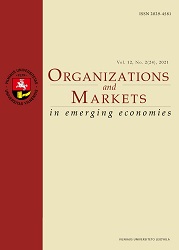The Impact of Currency Misalignment on Trade Balance of Emerging Market Economies
The Impact of Currency Misalignment on Trade Balance of Emerging Market Economies
Author(s): Abdullahil Mamun, Emrah Eray Akça, Harun BalSubject(s): Economic development, Financial Markets
Published by: Vilniaus Universiteto Leidykla
Keywords: trade balance; real exchange rate misalignment; undervaluation; overvaluation; emerging market economies;
Summary/Abstract: This study is an attempt to examine the impact of currency misalignment on the trade balance of emerging market economies from 1980 through 2016. It firstly measures the equilibrium RER and corresponding misalignment series of 21 EMEs separately adopting a single equation approach and then includes them in the trade regression together with undervaluation and overvaluation to estimate the dynamic relationship between the trade balance and real exchange rate misalignment employing the system generalized method of moment estimation approach. The study suggests that, being a composite series of undervaluation and overvaluation, higher real exchange rate misalignment helps recover trade imbalances. It also identifies that undervaluation improves trade balance, while overvaluation cuts it down. The study identifies that the misalignment series of RER for most of the EMEs are substantially dominated by overvaluation episodes, and hence the opposing impact of undervaluation and currency misalignment on the trade balance of EMEs is not surprising. From the policy perspective, competitiveness achieved through currency movements helps emerging market economies not only to improve trade balance but also to withstand vulnerability that arises from huge external borrowings creating a strong external payment position.
Journal: Organizations and Markets in Emerging Economies
- Issue Year: 12/2021
- Issue No: 24
- Page Range: 285-304
- Page Count: 20
- Language: English

